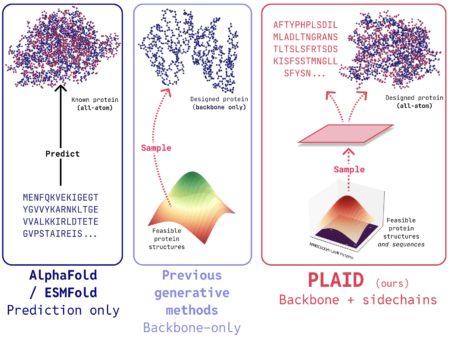
Alright, let’s get something out of the way first. If someone told you ten years ago that you could write a line of text, click a button, and have a full-blown cinematic video generated in under a minute, you’d probably smile politely and think, “Sci-fi nonsense.” But guess what? That wild idea isn’t wild anymore. It’s real, it’s evolving fast, and it’s showing up at your digital doorstep like a hyperactive delivery bot with a blockbuster in hand.
So yeah, the future’s not just coming. It’s practically knocking your coffee over while asking for Wi-Fi.
Wait… A Video in 60 Seconds with 60 seconds duration? Like, Really?
Yes. Seriously. It sounds borderline absurd, but that’s the magic AI’s pulling off right now. We’re talking about next-gen platforms where a text prompt is all it takes to spin up a video with characters, scenery, camera angles, music, and sometimes even nuanced expressions.
These aren’t your run-of-the-mill slideshow tools with stock photos awkwardly fading in and out. This is cinematic storytelling, created by neural networks trained on massive datasets of films, art, and real-world physics.
It’s where imagination meets automation – and the results? Jaw-dropping.
Say Hello to the Main Players
Let’s break down the current front-runners who are making this whole AI video thing feel like Pixar had a caffeine overdose.
1. Sora by OpenAI
Oh, Sora. The name sounds innocent enough. But behind that is some scary smart tech. With just a paragraph of descriptive text, Sora can whip up a hyper-realistic video that looks like it took a film crew weeks to shoot. People walking, waves crashing, dogs chasing kites – all simulated, yet eerily real.
OpenAI’s demos stunned the internet. One video even showed a drone flying over a neon-lit Tokyo alley – all AI-generated, all synthetic. The lighting, motion blur, even the lens flares? Spot on.
2. Kling AI – From China with Code
Kling isn’t playing around either. This model leans more into realism and narrative flow. One of their clips showed a woman drinking coffee in a rainy cafe, her eyes tracking cars through the window, steam curling from the cup.
It’s not just about movement – it’s about mood. Kling understands shadows, reflections, and timing. That’s not easy. That’s wizardry wrapped in code.
3. Haillow AI – The Experimental Maverick
Now here’s where things get weird in a good way. Haillow’s team has been experimenting with merging AI-generated audio, dynamic lighting changes mid-video, and interactive scene branching.
Think video meets game engine. One prompt could yield multiple versions – like a choose-your-own-adventure, but for trailers.
They’re not as polished as Sora or Kling (yet), but the creative flexibility? Mind-blowing. It’s like handing a camera to a lucid dream.
But… Why 60 Seconds?
That’s the sweet spot right now. It’s long enough to deliver a coherent scene or mini-narrative, but short enough for AI models to handle without melting the servers. Plus, let’s be honest – in an age of 8-second attention spans, 60 seconds feels just right.
And with platforms like TikTok, YouTube Shorts, and Instagram Reels dominating content consumption, creators aren’t looking for epic three-hour sagas. They want punchy, shareable, memorable content. Fast.
It’s Not Just About the Tools
Here’s the thing: it’s easy to geek out about Sora’s pixel precision or Kling’s ambient lighting. But the real game-changer here? Democratization of creativity.
Once upon a time, video production meant expensive gear, a dozen specialists, and weeks of post-production. Now, a high schooler with a Chromebook can generate a sci-fi short film before lunch.
And that, my friend, is profound.
We’re seeing a shift from “Who can create?” to “Who wants to create?” And that changes everything – education, marketing, entertainment, even therapy.
Yes, therapy. There’s already talk about using AI video tools for guided mental health visualizations or role-play scenarios for trauma processing. Wild, huh?
Tangent Time: Remember Flash?
Let me take you back for a sec. Remember Macromedia Flash? Before it became Adobe Flash and then got obliterated by modern browsers, it was the playground for early animators, meme makers, and indie storytellers.
That era exploded with raw creativity because it lowered the bar for animation.
That’s what AI video makers are doing now. But on a scale so massive, it makes Flash look like finger painting.
What’s Coming Next? You Might Not Be Ready.
So far, we’ve seen AI tools handle 60-second clips pretty well. But let’s be real – these are just prototypes of the bigger beast that’s forming.
Here’s what’s bubbling beneath the surface:
- Voice Cloning + Lip Sync: Soon, your AI-generated characters will speak with your voice – or Morgan Freeman’s, if licensing ever allows it. And yes, the lips will sync like magic.
- Emotion Mapping: Imagine typing “A couple sits under a dying tree. He looks at her, knowing it’s the last time.” And the AI nails that bitter-sweet gaze? Yeah, that’s coming.
- Real-Time Editing: No more rendering. You’ll tweak a scene while watching it. Change the weather, the outfit, or even the lighting angle – on the fly.
- Personal AI Actors: Think digital doubles trained on your face, your gestures, and your voice. Need to shoot a tutorial while on vacation? Your AI twin’s got it covered.
And if that doesn’t make your mind short-circuit a little… I don’t know what will.
Will This Kill Traditional Filmmaking?
Nope. Not even close.
Just like photography didn’t kill painting, and digital didn’t kill analog music, AI won’t kill filmmaking. But it will force it to evolve.
Big studios might use AI to storyboard or pre-visualize. Indies might use it to fill in the blanks they can’t afford to shoot. Educators will create immersive historical re-enactments. And marketers? Oh boy – they’re already salivating.
We’re looking at a world where Spielberg and a 12-year-old kid in Kerala might both be competing for your attention… on equal digital footing. And isn’t that kind of beautiful?
The Bottom Line: The Curtain’s Lifting
The 60-second AI video maker isn’t just a tool. It’s a portal. A glimpse into a creative future that’s fast, accessible, and strangely human – despite the silicon behind it.
The future is coming. But you know what? It’s already here, streaming in 4K with dynamic lighting and a haunting soundtrack – all crafted in under a minute.
FAQs – Because You’re Probably Still Processing This!
Q: Can I use tools like Sora or Kling AI right now?
A: Sora is currently limited to internal demos, but OpenAI plans to release it for developers and creators soon. Kling AI has shown promising beta tests, though it’s not yet widely available. Keep an eye out.
Q: Will AI-generated videos replace human actors and directors?
A: Not replace – but definitely shift the creative process. Think of AI as a creative partner, not a replacement. Human storytelling still matters more than ever.
Q: Is it possible to generate feature-length films with AI?
A: Technically? Not quite yet. Creatively? We’re getting there. The pieces are being built – it’s just a matter of time before someone stitches them together.
Q: Can I make money using these AI tools?
A: 100%. From creating ads, music videos, educational content, or even selling AI-generated story clips, the monetization avenues are already popping.
Q: Are there copyright issues?
A: Yes, and they’re a mess. If your AI-generated video uses a voice or likeness you don’t own? You’re in murky waters. Always check rights and permissions.
So, go ahead – start imagining that film idea you buried five years ago. The script you never finished. The brand promo stuck in your drafts folder.
Because now? You can make it happen. In 60 seconds flat.
Source: Read MoreÂ


